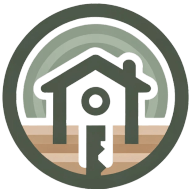How Do You Explain Mortgage Insurance to Clients?
Mortgage professionals are often tasked with demystifying the nuances of mortgage insurance to their clients, a challenge that begins with strategies like outlining the various types of mortgage insurance, as explained by a seasoned Mortgage Broker. Alongside expert advice, we've gathered additional answers that enhance understanding, from the mandatory nature of this safeguard for low down payments to its role in lowering the down payment barrier. Here's a collection of strategies and insights, culminating with the view of mortgage insurance as a financial safety net for lenders.
- Outline Types of Mortgage Insurance
- Clarify Canadian Mortgage Insurance
- Explain Lender Protection Below 20% Down
- Mortgage Insurance as Lender's Guarantee
- Mandatory Safeguard for Low Down Payments
- Financial Safety Net for Lenders
- Mortgage Insurance Lowers Down Payment Barrier
Outline Types of Mortgage Insurance
When explaining mortgage insurance to clients, I start by outlining the different types of insurance associated with a mortgage. I then go into further detail on each one, covering what they protect, what they don't, the costs involved, and whether they are mandatory or optional. The four main types of insurance I discuss are: default insurance (if applicable), title insurance, life and disability insurance, and homeowners insurance.

Clarify Canadian Mortgage Insurance
Mortgage insurance in Canada is a type of insurance that protects the lender, not the borrower, in case of default on the mortgage. If you're buying a home with less than a 20% down payment, mortgage insurance is mandatory and is provided by one of three insurers: CMHC, Sagen, or Canada Guaranty. The insurance allows you to secure a mortgage with a smaller down payment, which can make homeownership more accessible. The cost of the insurance premium is added to your mortgage and paid off over the life of the loan, though it can be paid upfront if preferred.
It's important to understand that while mortgage insurance enables you to buy a home with less money down, it doesn't protect you if you're unable to make payments. Instead, it mitigates the lender's risk in lending to you, which is why they are willing to offer you a mortgage with a lower down payment, and typically with a lower interest rate. This insurance shouldn't be confused with mortgage life insurance, which is a separate product designed to pay off your mortgage if you pass away.

Explain Lender Protection Below 20% Down
Lenders realize that if they have to foreclose on a property, they will get 80% of the value of that property, best case. Mortgage insurance is something the borrower buys for the lender that protects the lender against a loss if you put down less than a 20% down payment. That way, the lender feels confident in making a loan with a lower down payment that would otherwise be seen as too risky.

Mortgage Insurance as Lender's Guarantee
When a lender faces the possibility that a borrower might not be able to pay their mortgage, mortgage insurance serves as a shield against this risk. Think of it as a guarantee for the lender that they will receive payment, even if financial troubles prevent the borrower from fulfilling their obligation. It’s important for borrowers to understand that this insurance doesn’t protect them, but it does benefit them by enabling them to secure a loan.
Generally, this insurance is factored into the monthly mortgage payments. If you're exploring mortgage options, it's wise to calculate the full cost, including mortgage insurance, to have a clear idea of future expenses.
Mandatory Safeguard for Low Down Payments
Mortgage insurance acts as a reassurance for lenders that they will get the money back they lent, especially in cases where the buyer can’t pay. It's not an optional safeguard; instead, it’s usually compulsory when the down payment isn't substantial enough to offset the risk of default. The premium for this insurance is often built into the monthly mortgage payment, making it a somewhat hidden cost for a home buyer.
Even though it represents an added expense, it's crucial for borrowers because it can make homeownership possible sooner. To better understand how this affects your mortgage payments, consult with a mortgage professional.
Financial Safety Net for Lenders
Mortgage insurance is a financial safety net primarily designed to benefit banks and lending institutions. Although it is the borrower who pays for this insurance, it’s the lender who receives the payout if the borrower stops making payments. This type of insurance is commonly required for those who can't afford a large down payment, safeguarding the lender's interest in the loan.
It's a separate cost from other home-buying expenses like property taxes and home insurance. Before deciding on a mortgage, ensure you account for the cost of mortgage insurance and understand how it impacts your finances.
Mortgage Insurance Lowers Down Payment Barrier
For those buying a home with less than 20% down, lenders often require mortgage insurance to mitigate the risk posed by a high loan-to-value ratio on the mortgage. This protects the lender’s interests by providing a payout in the event the home buyer fails to pay the loan as agreed. This insurance charge is typically a part of the borrower's monthly mortgage payment, and though it can be significant, it enables many individuals to become homeowners much sooner than if they had to save for a larger down payment.
It's crucial to factor this into the budget when shopping for a home loan. Speak with a lending expert to understand how mortgage insurance affects your borrowing power.

